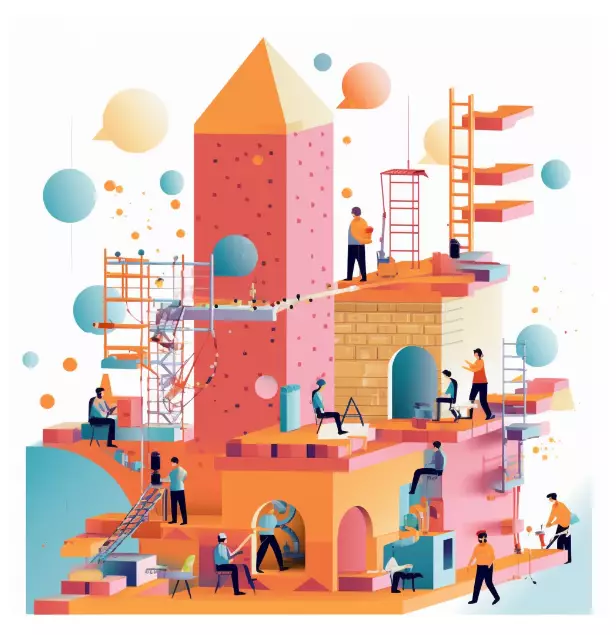- Home
- Crafting a Building Program: The Foundation of Good Design
Crafting a Building Program: The Foundation of Good Design

Developing a solid building program is kinda like laying the foundation for a new house. You need to do the groundwork upfront to ensure the entire structure doesn’t sink or crack later on. For any major construction project, having a detailed program that outlines the client’s wants and needs is crucial. It’s the recipe that guides the architects and engineers as they design spaces that actually work for the people who’ll use them.
Sure, creating a comprehensive program takes effort on the front end. But it pays off hugely as the project moves along, saving time and headaches down the road. In this article, we’ll walk through what a good program contains, steps for putting one together, and why it’s so critical for designers and builders to follow.
What Exactly is a Building Program?
Simply put, the program lays out clear goals, specs and requirements for the new building or renovation. It covers key details like the purpose, size, layout, budget, schedule and performance needs. The program gives the architects and engineers a detailed brief to inform their decision-making as they create concepts and plans. It provides guardrails to keep the design aligned with the client’s vision and needs from start to finish.
Programs range in detail depending on the project type, but often include:
– The client’s goals and priorities for the new facility
– Precise space requirements and relationships between rooms
– Technical benchmarks for lighting, acoustics, HVAC and such
– Project budget and major schedule milestones
– Anticipated operations and maintenance needs
Without this detailed roadmap at the outset, it’s easy for the design to drift from what users actually require. You might end up with a beautiful building that utterly fails as usable space. A tight program keeps everyone on track.
Must-Have Parts of a Solid Program
While programs vary, there are a few core elements every one should contain. We’ll hit the highlights:
Project Goals and Vision
Defining the client’s vision and priorities upfront is huge for guiding decisions later. Key points to capture:
– The building’s intended purpose and activities
– How it should embody the organization’s culture and values
– Specific goals, like fostering collaboration or community engagement
– Future flexibility needs as the organization evolves
Space Requirements and Layout
The program should detail the quantity, sizes, dimensions and configurations required for each area. Be sure to note any critical adjacencies between rooms too. Even small factors like proximity between classrooms and shared resources makes a big difference for schools. Diagrams help map relationships visually.
Technical Performance Requirements
Benchmarks for critical building systems inform engineering choices. Be specific about needs like:
– Acoustics: noise levels, sound isolation needs, etc.
– Lighting: task lighting levels, integration with AV systems
– HVAC: temperature, ventilation and zoning parameters
– Accessibility: standards for access, wayfinding and inclusion
– Sustainability goals: energy use, water conservation, waste reduction
Budget and Schedule
Every program should outline total project cost, construction budget, contingency funds, and key timeline milestones like start dates for design phases or the completion deadline. This sets clear expectations.
Operations and Maintenance
Understanding how the client plans to operate the building long-term helps designers make appropriate choices. Capture details like anticipated staffing, utility costs, cleaning needs, security protocols and IT infrastructure requirements.
Building the Program Piece by Piece
A rock-solid program doesn’t happen overnight. It takes diligence to build a comprehensive document that serves as a reliable compass throughout design and construction. Here are key steps:
Assemble the Right Team
Pull together the client decision-makers, end users, facilities staff, architects, engineers and community stakeholders who will guide the process from concept to occupancy. More perspectives yield a richer program.
Research Thoroughly
Dig deep into how the building will be used before generating solutions. Study existing facilities, systems and site conditions. Interview users. Observe workflows. Gaining empathy through research is huge.
Analyze Findings and Draw Conclusions
As a team, distill research to identify spatial, functional and technical needs. Spot potential design opportunities and constraints. Let the data tell a story and reveal what the building must accomplish.
Write a Clear and Adaptable Program
Synthesize research into a comprehensive draft. Use concise everyday language supplemented with diagrams. Avoid prescribing specific layouts too rigidly. Maintain flexibility for the architects’ creativity. Review drafts with users until there’s consensus.
Leveraging the Program at Each Design Stage
A rock-solid program doesn’t just inform early concepts. It should be used actively throughout the design process to evaluate decisions and tradeoffs at each stage:
Concept Design – Program goals and spatial relationships guide overall building massing, organization and circulation.
Schematic Design – Refer often to technical criteria, occupancy loads and such when developing detailed plans.
Design Development – Program specs inform selection of finishes, fixtures, equipment to support intended functions.
Construction – Program equips builders to meet acoustic, lighting and HVAC benchmarks.
Post-Occupancy – Program provides metrics to evaluate if project met original goals.
Allowing Reasonable Program Evolution
While the approved program serves as a north star, some flexibility is reasonable over a multi-year project. As design progresses, strategic updates may be warranted to:
– Align with budget realities after cost estimation
– Incorporate new technologies or sustainability incentives
– Adapt to shifts in user needs, regulations, or market conditions
– Address unexpected conditions uncovered in research or construction
By tracking changes transparently, the core vision remains intact.
Conclusion
Bottom line, an insightful program lays the groundwork for any building’s success. It crystallizes the client’s vision and communicates concrete goals to designers. With this trusty guide in hand, architects and builders can craft spaces that truly serve user needs and stand the test of time. The program transforms hopes and dreams into real-world solutions. Now that’s worth investing in upfront.
Author Bio
Wimgo
Other post in Categeory
© 2022 Wimgo, Inc. | All rights reserved.